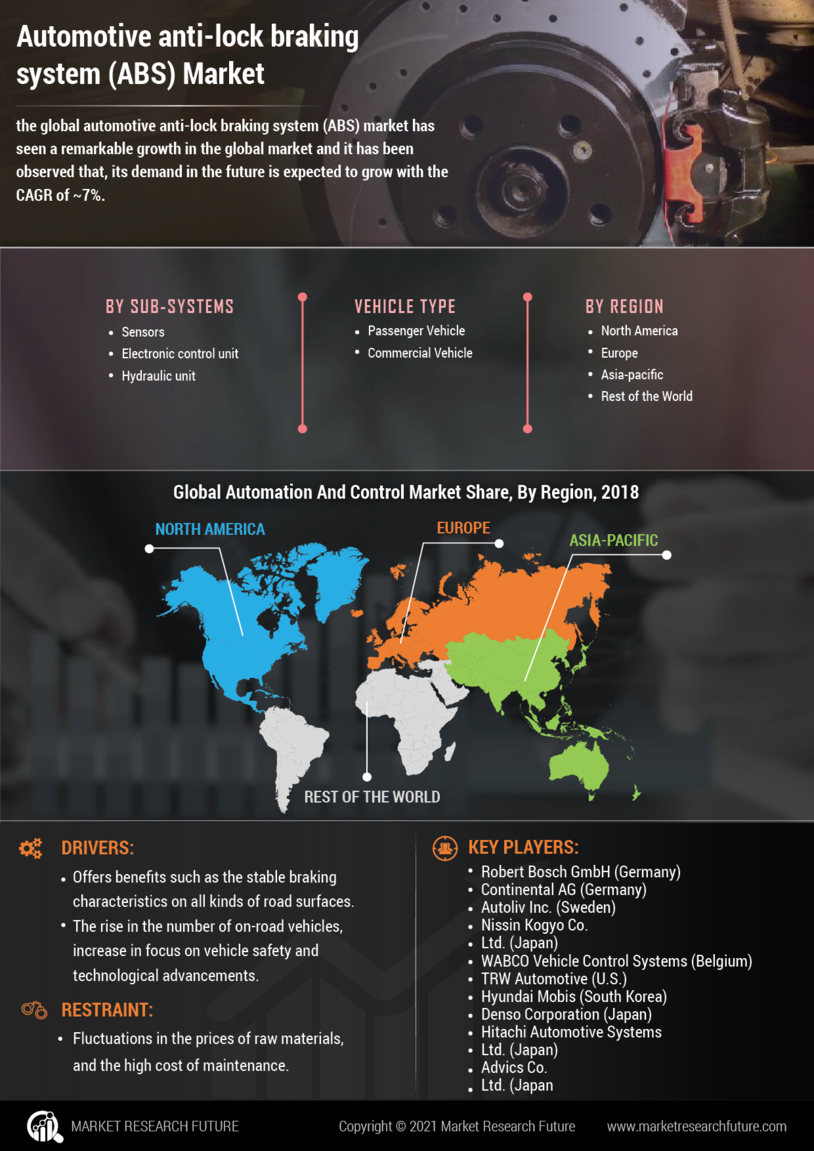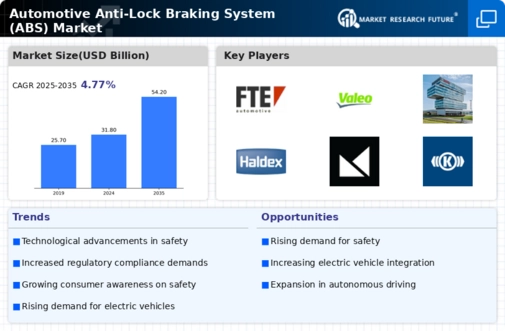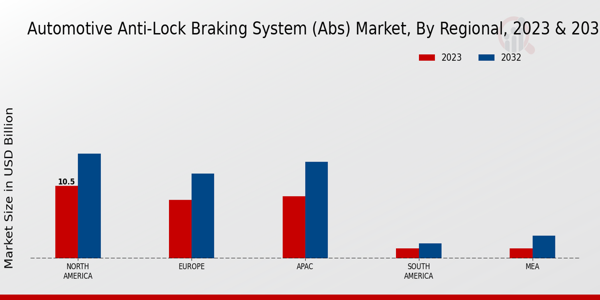Market Growth Projections
The Global Automotive Anti-Lock Braking System (ABS) Market Industry is projected to experience robust growth in the coming years. With a market valuation of 31.8 USD Billion anticipated in 2024, the industry is expected to expand significantly, reaching 54.2 USD Billion by 2035. This growth trajectory suggests a compound annual growth rate (CAGR) of 4.96% from 2025 to 2035. Factors contributing to this growth include increasing vehicle safety standards, technological advancements, and the rising demand for electric vehicles. The market's expansion reflects the critical role of ABS in enhancing vehicle safety and performance.
Growing Awareness of Road Safety
There is a notable increase in public awareness regarding road safety, which is significantly influencing the Global Automotive Anti-Lock Braking System (ABS) Market Industry. As consumers become more informed about the benefits of ABS, including reduced stopping distances and improved vehicle control, the demand for vehicles equipped with this technology is likely to rise. Educational campaigns and advocacy for safer driving practices are contributing to this trend. Consequently, the market is projected to reach 31.8 USD Billion in 2024, reflecting the growing recognition of ABS as a vital safety feature in modern vehicles.
Technological Advancements in ABS
Technological innovations are significantly influencing the Global Automotive Anti-Lock Braking System (ABS) Market Industry. The integration of advanced technologies such as electronic stability control and anti-lock braking systems enhances vehicle performance and safety. Manufacturers are increasingly investing in research and development to improve ABS functionality, which may lead to more efficient braking systems. This trend is likely to drive market growth, with projections indicating a market size of 54.2 USD Billion by 2035. As technology continues to evolve, the capabilities of ABS are expected to expand, making it a critical component in the automotive sector.
Increasing Vehicle Safety Standards
The Global Automotive Anti-Lock Braking System (ABS) Market Industry is experiencing growth driven by the rising emphasis on vehicle safety standards. Governments worldwide are implementing stringent regulations to enhance road safety, which necessitates the incorporation of advanced braking systems like ABS. For instance, the European Union mandates that all new vehicles must be equipped with ABS, thereby increasing its adoption. This regulatory push is expected to contribute to the market's valuation, projected to reach 31.8 USD Billion in 2024. As safety becomes a priority, the demand for ABS is likely to rise, further solidifying its role in modern vehicles.
Rising Demand for Electric Vehicles
The shift towards electric vehicles (EVs) is poised to impact the Global Automotive Anti-Lock Braking System (ABS) Market Industry positively. As the automotive landscape transforms, EV manufacturers are increasingly incorporating ABS to ensure optimal braking performance and safety. The growing consumer preference for environmentally friendly vehicles is likely to drive the demand for ABS in this segment. With the market expected to grow at a CAGR of 4.96% from 2025 to 2035, the integration of ABS in EVs will play a crucial role in meeting safety standards and enhancing the overall driving experience.
Expansion of Automotive Industry in Developing Regions
The expansion of the automotive industry in developing regions is a critical driver for the Global Automotive Anti-Lock Braking System (ABS) Market Industry. As countries in Asia-Pacific and Latin America experience economic growth, the demand for vehicles is surging. This growth is accompanied by an increasing focus on safety features, including ABS. Governments in these regions are also beginning to implement regulations that promote the adoption of advanced braking systems. As a result, the market is expected to witness substantial growth, with projections indicating a market size of 54.2 USD Billion by 2035, driven by the rising production and sales of vehicles in these emerging markets.












